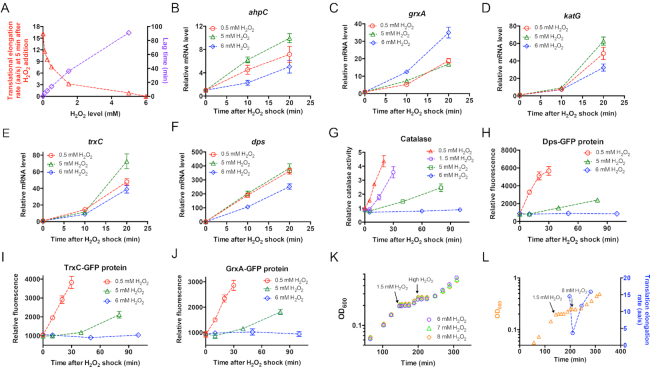Figure 5.
Inhibition of translational elongation by oxidative stress limits the de novo synthesis of catalase. (A) The correlation of translational elongation rate (at 5 min after the addition with H2O2) and lag time with the dose of H2O2. (B–F) The mRNA levels of five genes in oxyR-regulon at various time points after the addition of 0.5, 5 and 6 mM H2O2. (G) The total catalase activity of E. coli at various time points after the addition of 0.5, 1.5, 5 and 6 mM H2O2. The data at time zero of 0.5 mM H2O2 is set as 1. (H–J) The levels of three GFP-fused proteins at various time points after the addition of 0.5 mM, 5 mM and 6 mM H2O2. (K) Pre-adaption of a low H2O2 dose allows cell to counteract a higher lethal H2O2 dose than no pre-adapted cells. E. coli cells were first subject to the treatment of 1.5 mM H2O2; after the growth recovery, high doses of H2O2 (6, 7 and 8 mM) were respectively added to the cultures to initiate a second round of oxidative stress. (L) The translational elongation rate and growth curve of E. coli cells (pre-adapted to 1.5 mM H2O2 treatment) upon subjecting to 8 mM H2O2 treatment.

